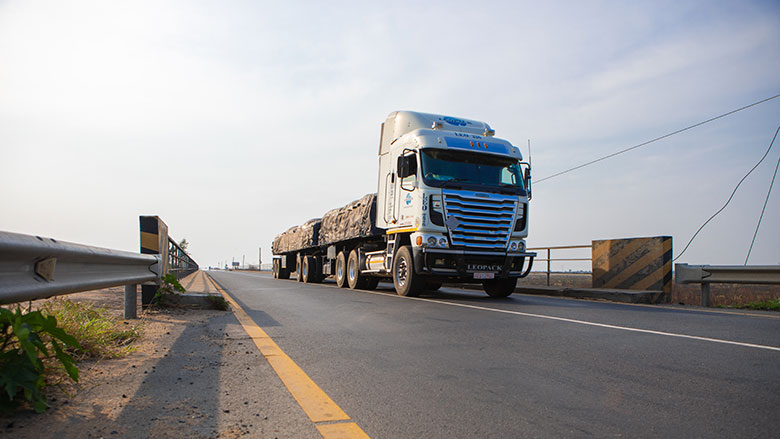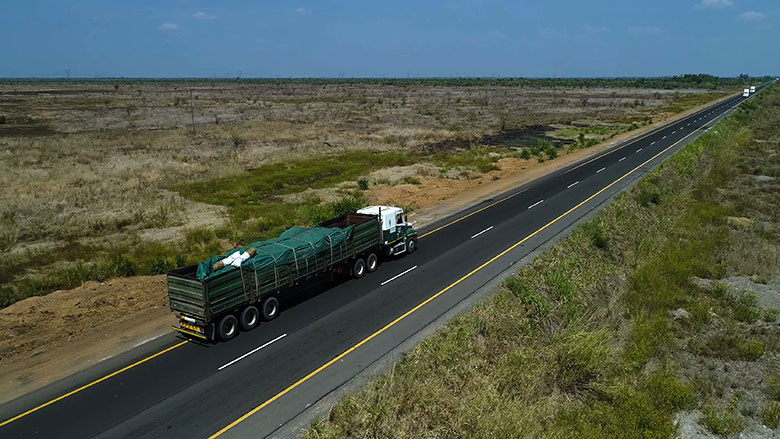MAPUTO, December 13, 2019 – To Samuel Ernesto, the vast sedimentary plain of Mozambique’s Nhamatanda district is like the face of an old friend.
Ernesto, 49, knows the plain well after 22 years of driving a long-haul truck linking the port of Beira in Mozambique’s Sofala Province to Lilongwe, in neighboring Malawi. Before Cyclone Idai tore through six provinces of Mozambique in mid-March of 2019, Ernesto’s trip took seven to eight hours. After Idai destroyed National Road Number 6 in three places, the journey required 12 days. And after the long journey, Ernesto said his truck would arrive the destination completely damaged, with goods that were no longer of export quality.
Now, thanks to a World Bank-financed road-and-bridge restoration grant, Ernesto is back to his pre-cyclone timetable. On a recent day, he smiled as he zipped across an 11-kilometer stretch of the road in 15 minutes. Before the restoration, it took two hours.
EN-6 is one of Mozambique’s busiest highways, so its sidelining hurt the country’s economy. But it also sapped the economies of the countries it connects to – Malawi, Zambia and Zimbabwe.
Weather catastrophes like cyclones, floods and drought are common in Mozambique. But Cyclone Idai and its twin, Cyclone Kenneth, which struck six weeks later, were the most devastating cyclones in the country’s recent history. Cyclone Idai killed more than 1,000 people, caused unprecedented destruction, and disrupted the lives of three million residents of Mozambique, Malawi and Zimbabwe. Cyclone Kenneth’s landfall in late April marked the first time that two major cyclones had hit Mozambique in the same season.


